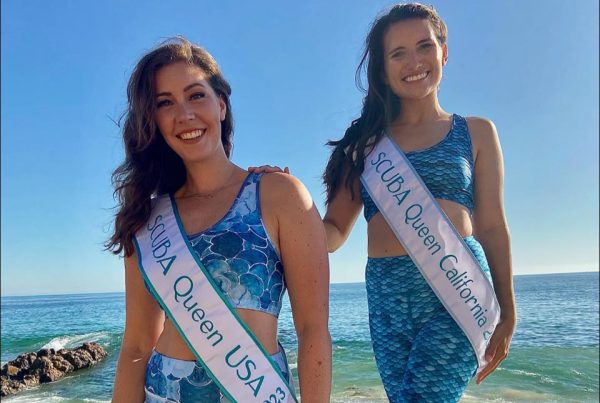The California Department of Fish and Game (DFG) began its fourth season of remotely operated vehicle (ROV)-based assessments of the northern Channel Islands.
“The research program focuses on evaluating the marine protected areas (MPAs) implemented in 2004 under the Marine Life Protection Act,” said Konstantin Karpov, DFG senior biologist and project manager. “The key to our study is having a ROV system that consistently captures video of hundreds of kilometers of ocean floor each year—beyond depths divers can reach. From this video we can measure fish and invertebrate abundance.”
The ROV is coming into its fourth year of full operation, allowing DFG and its partners the statistical benefit that a study over time provides. Each year’s survey data is part of a series collected over time to monitor changes in fish abundance within the MPAs. While nearshore finfish that inhabit rocky areas are the current focus of the study, video data collected will also be used to assess changes in invertebrate densities and habitat.
DFG’s program operates with a consortium of partners including the Pacific States Marine Fisheries Commission (PSMFC), Marine Applied Research and Exploration (MARE), The Nature Conservancy (TNC) and the National Oceanographic and Atmospheric Administration (NOAA).
DFG leads the team of biologists, engineers and crew aboard the NOAA research vessel Shearwater to survey 10 sites among the islands, which form five survey site pairs. The pair consists of one site within the MPAs, and a similar site outside of the MPAs for comparison. The 2008 survey mission took place from August 4 through August 21.
Over the past decade, DFG has pioneered new protocols for using specially equipped ROVs as sampling tools at depths greater than 65 feet (20 meters). The ROV was purchased in 1997 together with the PSMFC. The goal is to complete a deep-water species inventory of Punta Gorda Ecological Reserve off the northern California coast and then survey in Ft. Bragg, Bodega Bay, Monterey Bay and the Farallon Islands, among others. With the support of the Ocean Protection Council, the ROV was rebuilt using improved technology including a new high-resolution camera, enhanced navigation and cutting edge software developed by DFG and PSMFC staff. DFG christened the refurbished ROV “BOB” in memory of former Fish and Game Commissioner Bob Hattoy who passed away in March 2007.
In 2003, the DFG and PSMFC were joined by MARE, TNC and the Channel Islands National Marine Sanctuary to expand the Channel Islands MPAs deep-water sampling. DFG hopes to see a second ROV system launched later this year to be operated by MARE in cooperation with TNC, providing needed redundancy and back up to the DFG system, while also helping to expand research capabilities.
For more information about this study and other DFG ocean research, visit the DFG Web site at www.dfg.ca.gov/marine/fir/index.asp. More information about the Marine Life Protection Act can be found at www.dfg.ca.gov/mlpa.









